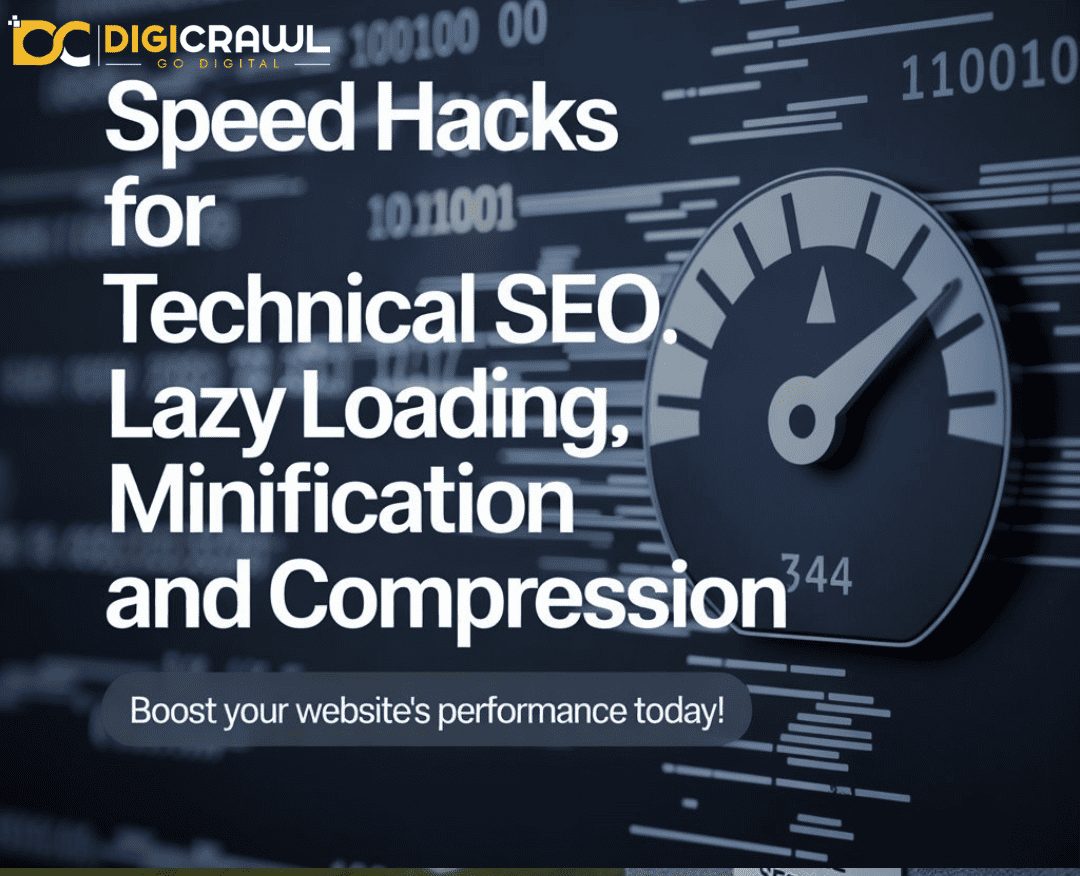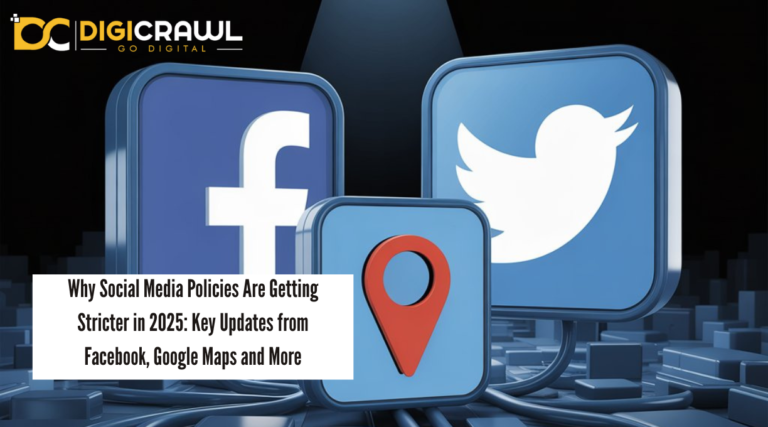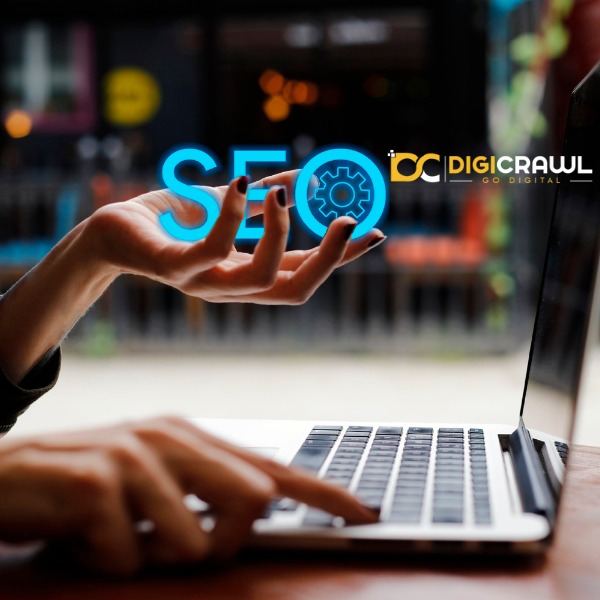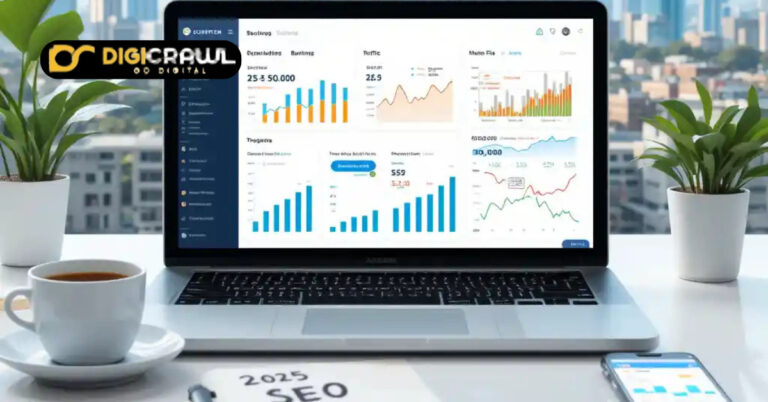Speed Hacks for Technical SEO. Lazy Loading, Minification and Compression
The internet moves fast. If your website does not load quickly people leave. It is that simple. In today’s digital world speed matters just as much as good design or quality content. If your website takes too long to load users won’t stick around and search engines notice that too.
Table of Contents
ToggleThis is where technical SEO comes in. It is the behind-the-scenes part of SEO that helps your website perform better. One of the most important parts of technical SEO is speed. In this content we will explain three smart ways to make your website faster: Lazy Loading Minification and Compression.
A one second delay in page load time can lead to a 7% loss in conversions.” Neil Patel, Digital Marketing Expert
Let’s break them down one by one.
1. Lazy Loading Only Show What is Needed
Imagine you are opening a book but instead of flipping through every page it only shows the part you are reading right now. That is what lazy loading does for a website.
Lazy loading means images and videos do not load until someone scrolls down to them. This way your website does not have to load everything at once.
Why it is helpful:
- It speeds up your website for the user.
- It saves data and is helpful for people with slower internet access.
- It makes your website feel faster even if it has lots of pictures or videos.
How it works:
Web developers use a small piece of code to tell the browser “Wait Do not load this image unless someone scrolls here.” This trick reduces the time it takes for your website to open at the top.
Tools you can use:
- WordPress plugins like Smush or Lazy Load by WP Rocket
- JavaScript libraries like lazysizes
Lazy loading is a great starting point if you have an image heavy website. It is easy to add and brings fast results.
2. Minification Cutting the Extra Fat
Minification is like cleaning up a messy notebook. You remove all the extra spaces, comments and unused parts in the code. This makes your website’s code smaller and faster.
Your website is made with code like HTML, CSS and JavaScript. These files tell the browser how to show your website. But sometimes they include:
- Extra spaces
- Notes for developers
- Lines of code that do not do anything
Minifying these files removes all of that so the browser has less to read.
Why it matters:
- Faster loading time
- Cleaner code
- Better performance on both mobile and desktop
Tools you can use:
- Minify Code (online tool)
- WordPress plugins like Autoptimize or Fast Velocity Minify
- Website builders like Shopify and Wix often do this automatically
Minification might seem like a small change but it can cut file sizes by 20–60%. That is a big deal when it comes to loading speed.
3. Compression Shrink Without Breaking
Think of compression like packing a suitcase. You can fit more stuff into your bag if you pack it the right way. Website compression works the same way.
When someone visits your website the browser downloads your web files. Compression makes those files smaller before they are sent so they download faster.
The most common type is:
GZIP compression: It reduces file sizes by 70–90% in most cases.
Why it works:
- Smaller files = faster downloads
- Faster downloads = better user experience
- Better user experience = higher search engine rankings
How to check and enable compression:
- Use tools like GTmetrix, PageSpeed Insights or Pingdom
- Ask your hosting company if GZIP is enabled
- Use server settings or plugins to turn it on
Compression is often set at the server level. You may not even know it is there but it makes a huge difference in speed.
Why Speed Matters for SEO
Google has made it clear: fast websites rank better. They use something called “Core Web Vitals” to measure things like speed, responsiveness and stability.
If your website is slow it could:
- Drop in search rankings
- Get fewer visitors
- Lose customers
Fast websites on the other hand:
- Keep people engaged
- Rank higher on search results
- Get more leads and sales
Conclusion
Improving your website speed is not just a tech thing it is a business thing. Lazy loading, minification and compression are three easy ways to make your site faster and more user-friendly. They do not cost much to implement but they give a big return.
At Digicrawl we believe that better speed means better results. Whether you run a blog, an online store or a local business website these simple tricks can help your website shine.
Need help speeding up your website? Let our team at Digicrawl handle the tech so you can focus on growing your business.






